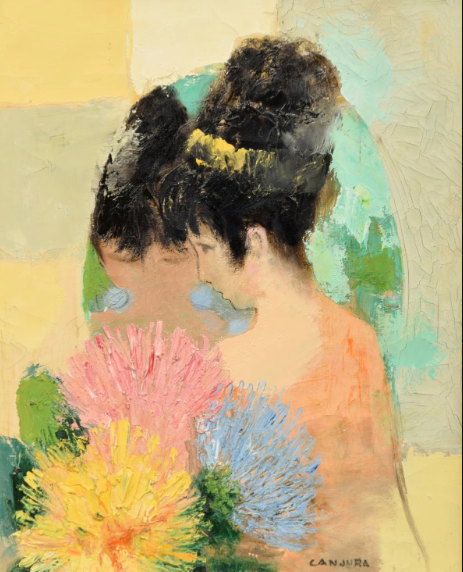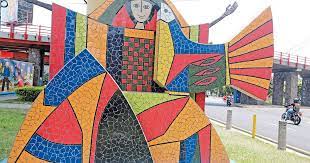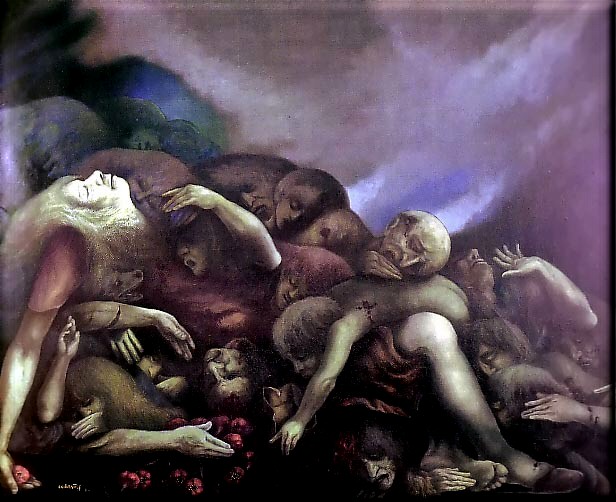Echoes of El Salvador: The Painters Who Created a Cultural Legacy
Have you ever wondered what stories from the past have shaped the masterpieces of its most celebrated painters? Salvadoran art is distinctive for its ability to weave together a multitude of influences - from indigenous and colonial to modern and contemporary - while addressing themes that are both deeply personal and universally resonant.
The art culture in El Salvador has been shaped by numerous important events, movements, and groups that have contributed to its unique identity. The country's art has often been a mirror to its socio-political climate, reflecting the struggles and aspirations of its people. During the mid-20th century, for example, the social realism movement gained prominence as artists began to use their work to comment on social injustice, poverty, and political strife. This period was marked by the work of artists who were deeply engaged in the social and political discourses of their time, using their canvases to document and critique the realities of Salvadoran life.
One of the most significant movements in Salvadoran art is the Nueva Escuela (New School), which emerged in the late 20th century. This movement was characterized by a shift towards more abstract and experimental forms, as artists sought new ways to express the rapidly changing social and cultural landscape of El Salvador. The influence of indigenous art and culture also remains a potent force in Salvadoran art, infusing it with symbols, colors, and themes that are uniquely Central American.
Art in El Salvador is also celebrated through various important events and festivals that showcase the country's artistic talent. The Palmarés Festival, for example, is a prominent art festival that features a wide range of Salvadoran art, from painting and sculpture to performance and multimedia works. These events not only highlight the diversity and richness of Salvadoran art but also foster a sense of community and national pride among artists and art lovers alike.
In this article, we will present five of the most remarkable painters from El Salvador, whose biographies and works have significantly contributed to the nation's artistic legacy. These artists, with their unique styles and perspectives, have played pivotal roles in shaping the Salvadoran art world and have left an indelible mark on the cultural landscape of the country.
1. Noe Canjura (1924-1970)

Noe Canjura "Woman With Flowers"
Noe Canjura was a prominent Salvadoran painter known for his contributions to modern art, particularly in the mid-20th century. Canjura's work often reflects his Salvadoran heritage, blending elements of European modernism with indigenous themes and local culture. His style can be characterized as a blend of Cubism and Surrealism with influences from his Salvadoran surroundings. Canjura often depicted scenes of rural life, landscapes, and indigenous people, incorporating vibrant colors and bold shapes. He was skilled at capturing the essence of his subjects while infusing his own unique interpretation. Noe Canjura's artistic repertoire extended beyond social commentary to encompass the delicate beauty of nature, particularly evident in his affection for flowers. His collection includes many exquisite bouquet paintings, among which "Volcanena," "Spring Flowers," and "Woman with Flowers" which stand out for their serene portrayal of floral arrangements. These pieces exude a sense of tranquility with their bright yet subdued palette, evoking the gentle rhythms of life. In "Sous les Ombrelles," Canjura masterfully captures a moment of leisure, depicting a young lady poised beneath an umbrella against a backdrop of fruits and a deep blue sky, showcasing his ability to infuse everyday scenes with an aura of elegance and charm. Noe Canjura's distinctive style and mesmerizing use of colors, particularly in his portrayal of flowers, render his works instantly recognizable in any exhibition!
2. Fernando Llort (1949-2018)

Fernando Llort "Fraternal Hug"
Fernando Llort was celebrated for his vibrant and whimsical style, often characterized by colorful geometric patterns and motifs inspired by indigenous Central American art. His art often explores themes of spirituality, community, and the beauty of everyday life, offering a colorful celebration of Salvadoran culture. Fernando Llort's artistic expression is deeply rooted in the rich tapestry of Mayan culture, where modern concepts merge seamlessly with a charmingly naive drawing style. Employing a diverse array of techniques and materials, ranging from paintings to wood, ceramics, and even glass, Llort's creativity knows no bounds. Influenced by the "hippie" movement and his devout religious inclinations, which led him to briefly pursue priesthood before redirecting his path, Llort envisioned a cultural renaissance where art becomes not just a pursuit but a way of life for both himself and his community. His dream was humble yet profound: to infuse everyday existence with the essence of art, always with a dedication to the divine. This vision blossomed into reality through his sincere approach to life and his unwavering commitment to sharing his talents with all. In La Palma, he established the Center for Integrated Development, a hub of artistic learning, and the "La Semilla de Dios" (The seed of God) workshop, which evolved into a cooperative nurturing countless local artisans since 1977. This cultural resurgence birthed what became known as the Palmeño style, a vibrant fusion of tradition and innovation. Among Llort's most significant contributions stands the monumental "Fraternal Hug," comprising three murals and four ceramic mosaic sculptures adorning the southern gateway to San Salvador, the capital of El Salvador. Additionally, Llort championed local handicrafts through the "El Arbol de Dios" cultural house, an institution he founded in 1985, further solidifying his legacy as a visionary artist and cultural catalyst. His artistic influence extends further through frescoes and murals scattered across Salvadoran landscapes.
3. Camilo Minero (1917-2005)

Camilo Minero "The Little Paper Flower Seller"
Camilo Minero was a prominent Salvadoran painter, engraver and muralist, known for his contributions to the art scene in El Salvador during the mid-20th century. Awarded a scholarship to further his education at the Instituto Politecnico Nacional in Mexico, he had the opportunity to learn from renowned artists Diego Rivera and David Alfaro Siqueiros. His fondness for the color yellow is evident throughout his portfolio, often making it the focal point of his compositions. "The Little Paper Flower Seller" emerges as a luminary work among his celebrated creations. It features a young girl dressed in blue, selling crafted paper flowers against a vibrant yellow backdrop. One more work, the large-scale mural "Mi Pueblo" (My People) that captures the essence of the community spirit, showcasing children's faces, workers' diligent hands, and the optimistic gazes of those striving for a brighter tomorrow. This artwork brings to the forefront two primary themes: peace, symbolized by the sunlight and the lushness of nature, and human rights, depicted through the unencumbered daily lives of individuals under the assurance of peace. The artist's signature technique is highlighted by the overlapping and fragmented lines across the canvas, alongside the employment of yellow and other warm hues, injecting the piece with a sense of warmth and the vibrant energy characteristic of the region. Known affectionately as "El pintor del pueblo" (the painter of the people) for his left-leaning political views, Camilo Minero's association with the Farabundo Marti National Liberation Front ultimately led to his incarceration and forced exile, marking a tumultuous period in his life.
4. Julia Díaz (1917-1999)

Julia Díaz "Chabela Y Sus Hermanitos"
Julia Díaz was a well-known painter and cultural activist from El Salvador who had a lasting impression on the country with her paintings and initiatives to support the arts. Her paintings, deeply intertwined with the country's social fabric, evolved stylistically from geometric and delineated forms to more expressive and blurred strokes, mirroring the social upheavals leading up to the civil war. Notable works like "Chabela y sus hermanitos", "Familia", and "Maternidad'' delve into themes of poverty, family disintegration, and the effects of conflict, offering a poignant narrative of Salvadoran life. Díaz's legacy extends beyond her artwork, through her establishment of Galería Forma in 1958, El Salvador's first open forum for artistic expressions, and Museo Forma in 1983, the first art museum in the country, housing her vast collection. Despite the 1986 earthquake's destruction of the museum, her foundation, Fundación Julia Díaz, continues to preserve her contributions to Salvadoran culture. Her accolades include a Mención Honorífica at the VI Bienal del Museo de Arte Moderno de Sao Paolo in 1961, among others, culminating in being declared Pintora Meritísima by the Legislative Assembly in 1998, a year before her death. In 2022, Díaz's 105th birthday was commemorated by a new generation of artists, celebrating her six-decade-long influence on Salvadoran visual arts and underscoring her role as a pioneering figure in the arts and cultural development of El Salvador. Her work continues to be celebrated for its depth, vibrancy, and reflection of Salvadoran identity and challenges...
5. Carlos Cañas (1924-2013)

Carlos Cañas "El Masacre Del Templo De La Concordia"
A luminary in the Salvadoran art scene, Carlos Cañas stood out for his incisive murals and paintings that boldly addressed the socio-political disparities in his homeland. Educated at the Salvadoran School of Arts, Cañas furthered his mastery in the arts through a scholarship at Madrid's Real Academia de Bellas Artes de San Fernando, where he immersed himself in art, history, aesthetics, and literature. His seminal mural, "El Masacre del Templo de la Concordia," powerfully illustrates the slaying of student protestors in a serene demonstration. Moreover, his stirring creation "Sumpul" masterfully renders the chilling scene of the 1980 Sumpul River massacre, intertwining victims against a brooding sky, a testament to the anguish and tumult of the calamity, reminiscent of the emotional depth found in Picasso's "Guernica." His artistic prowess and commitment to social issues were rightfully acknowledged when El Salvador honored him with the Premio Nacional de Cultura in 2012, a year before he passed away. Carlos Cañas' evocative masterpieces continue to attract art lovers and tourists worldwide with their timeless resonance and profound social criticism.
Experience the Richness of the Art World Without Leaving Your Home!
The art of El Salvador, known for its adaptability and resilience, shines brightly, showcasing the country's innovative spirit and optimism. Reflecting a history of challenges, it also embodies the strength and hopeful resilience of its people. Thanks to TrendGallery, anyone can joyfully explore the vibrant artworks around the world with just a click!
No Comments Yet...